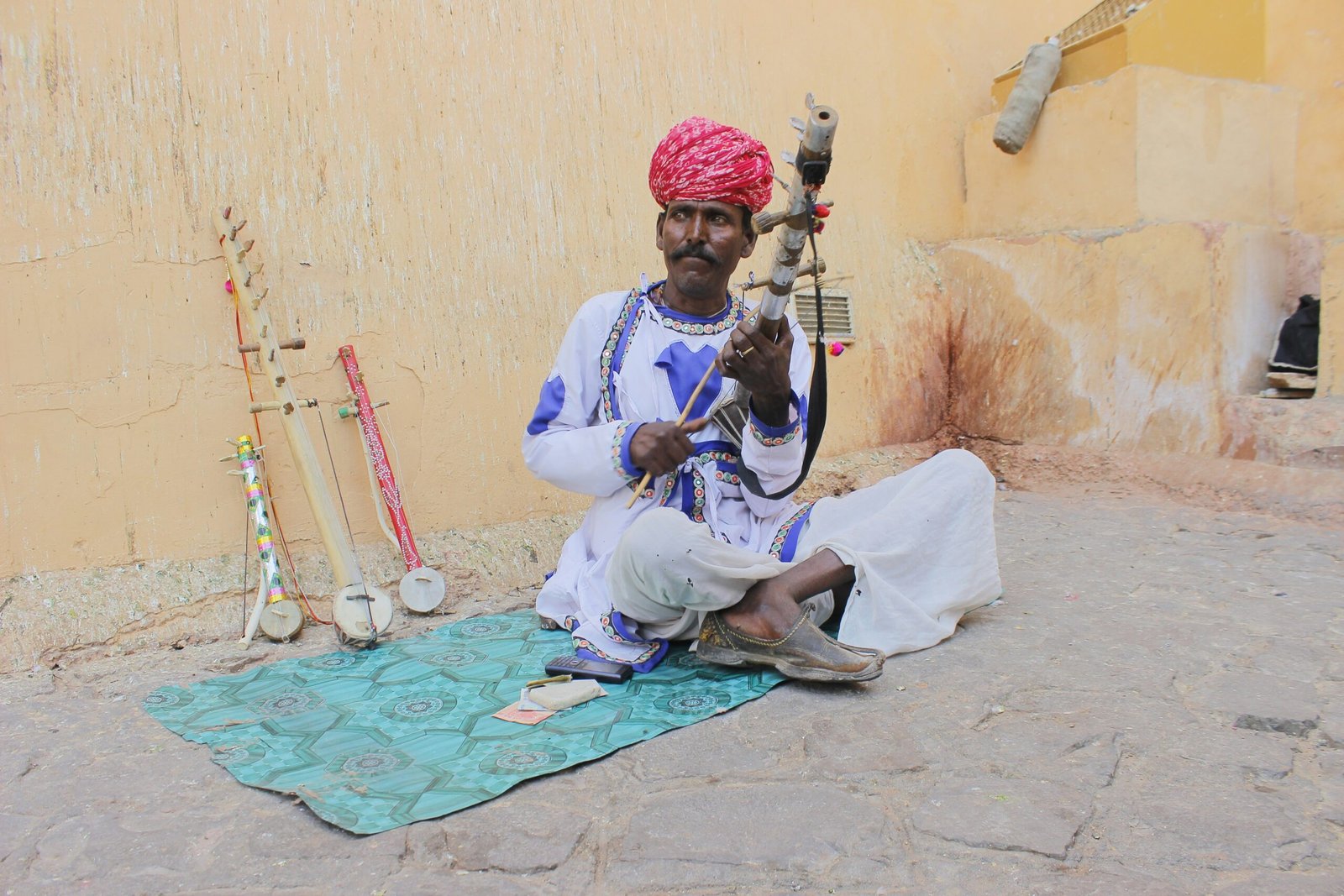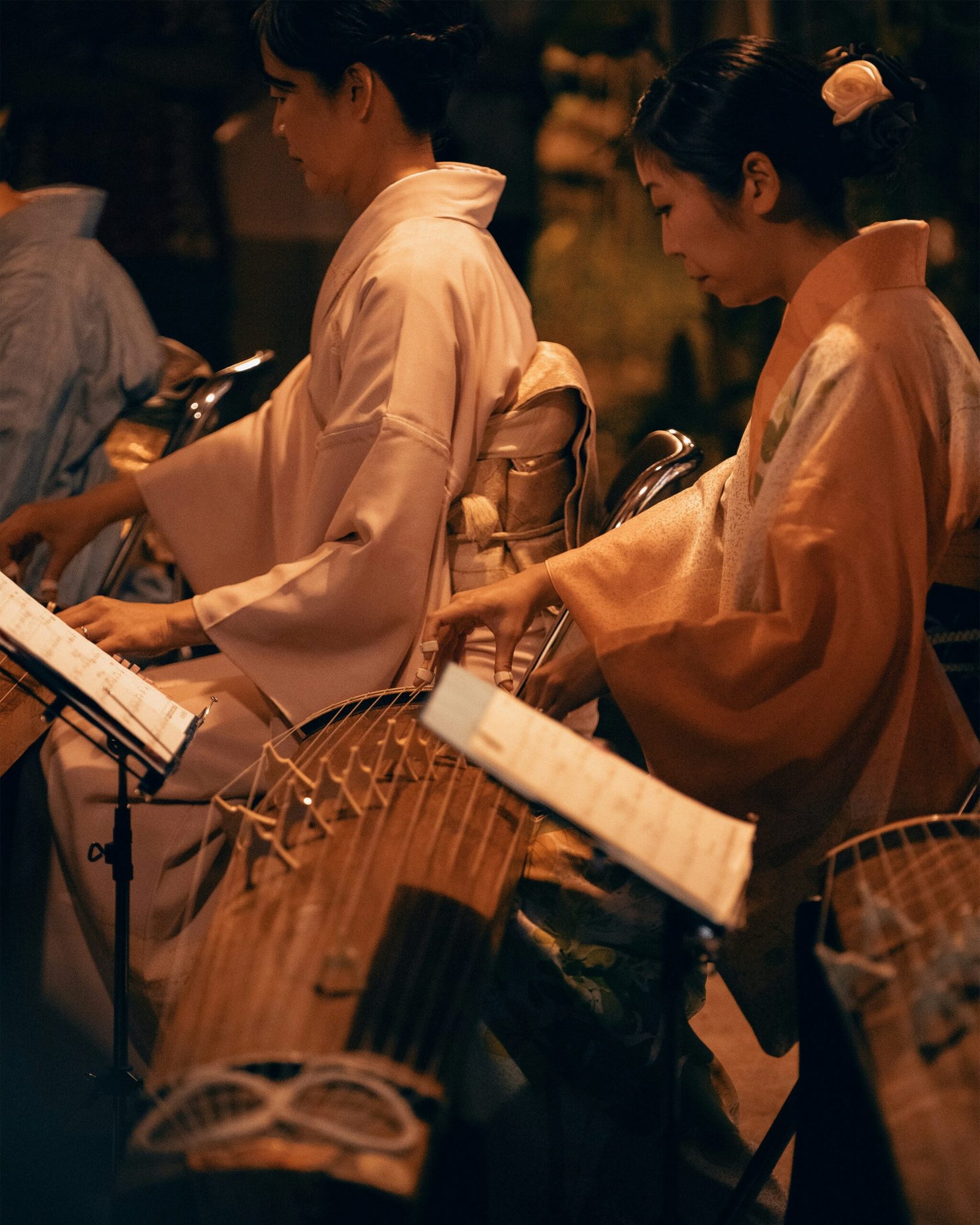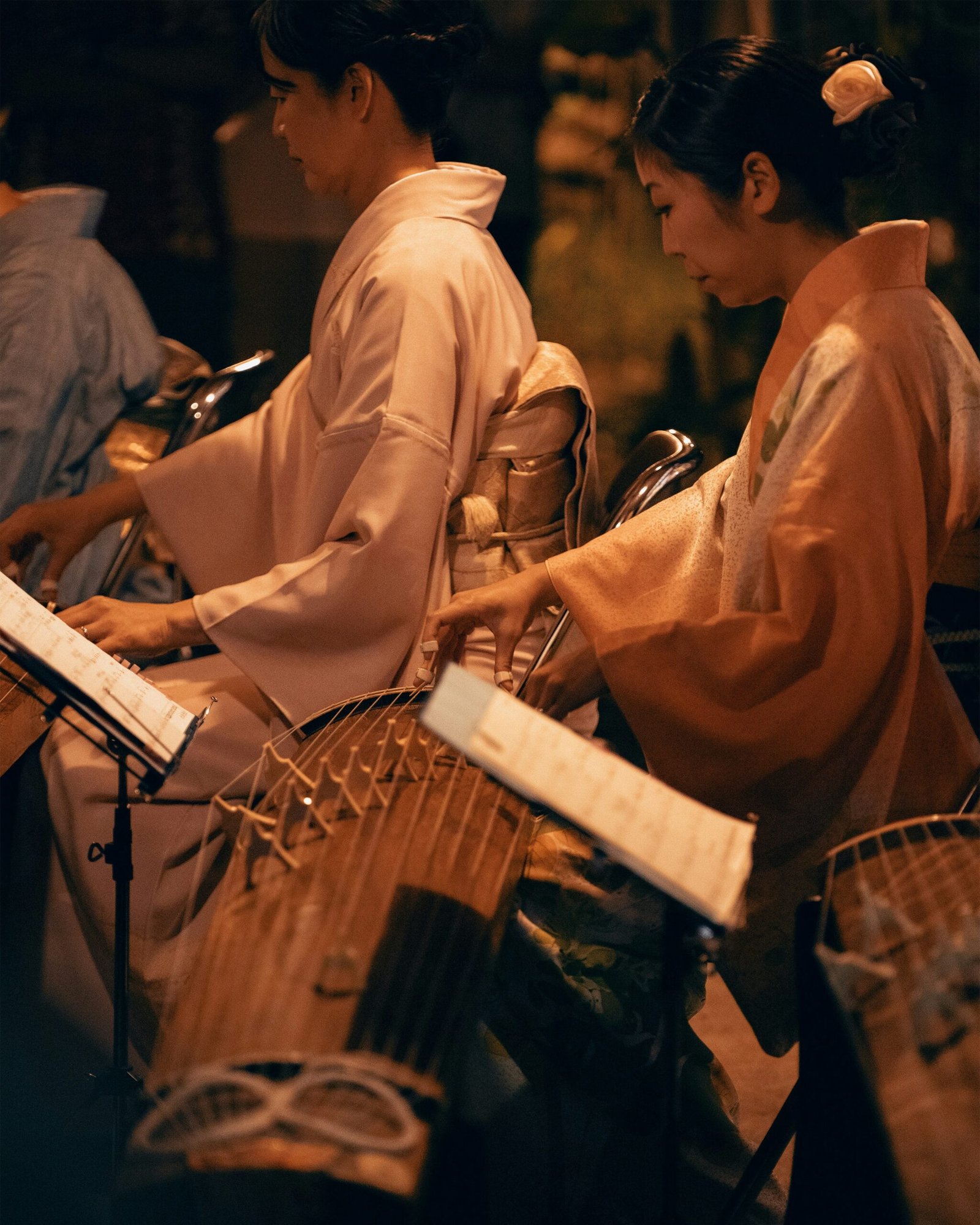
Indian classical music is deeply rooted in the cultural and spiritual traditions of India. It has its origins in the ancient Vedic scriptures, which contain hymns and chants that were sung during religious rituals. These early musical practices laid the foundation for the development of Indian classical music as we know it today.
One of the distinctive features of Indian classical music is its emphasis on improvisation. Unlike Western classical music, which is largely based on written compositions, Indian classical music is primarily an oral tradition. It is passed down from generation to generation through a system of apprenticeship, where students learn directly from their gurus (teachers).
The two main styles of Indian classical music are Hindustani and Carnatic. Hindustani music is primarily associated with North India, while Carnatic music is associated with South India. Although there are some similarities between the two styles, they have distinct characteristics and performance practices.
In Hindustani music, the main melodic element is the raga, which is a complex framework of melodic rules and patterns. Each raga has its own unique mood, and performers explore its various nuances and possibilities through improvisation. The rhythmic element in Hindustani music is provided by the tabla, a pair of hand drums that produce a wide range of sounds and rhythms.
Carnatic music, on the other hand, places more emphasis on precise rhythmic patterns and intricate compositions. The melodic element in Carnatic music is based on the concept of ragam, which is similar to the raga in Hindustani music. However, Carnatic ragams have a more fixed structure and are associated with specific compositions.
Both Hindustani and Carnatic music have a rich repertoire of compositions, ranging from devotional songs to complex instrumental pieces. These compositions are often performed with great virtuosity and creativity, showcasing the technical skills and artistic sensibilities of the musicians.
Indian classical music is not just a form of entertainment; it is also considered a spiritual practice. It is believed to have the power to evoke deep emotions and create a sense of harmony and inner peace. In fact, many of the ragas and compositions in Indian classical music are associated with specific moods and emotions, and are often performed in specific times of the day or year to create a particular atmosphere.
Over the centuries, Indian classical music has also been influenced by various other musical traditions, including Persian, Arabic, and folk music. This has resulted in a rich and diverse musical landscape, with different regions of India having their own unique musical styles and traditions.
In conclusion, Indian classical music is a treasure trove of musical heritage and artistic expression. Its deep roots, intricate melodies, and spiritual significance make it a truly unique and captivating art form. Whether you are a music enthusiast or simply curious about different cultures, exploring the world of Indian classical music is sure to be a rewarding and enriching experience.
As Indian classical music evolved, it became deeply intertwined with spirituality and religious practices. It is believed that the divine deities themselves were the first musicians, and their celestial melodies were the inspiration for human musicians. The practice of music was considered a form of worship and a means to connect with the divine.
One of the key aspects of Indian classical music is its emphasis on improvisation. Unlike Western classical music, which is often composed and performed exactly as written, Indian classical music allows for a great deal of spontaneity and creativity. Musicians are trained to improvise within the framework of a raga, which is a melodic framework consisting of a specific set of notes and rules for their arrangement.
The performance of Indian classical music is characterized by its intricate and complex rhythms. The rhythmic patterns, known as tala, are an integral part of the music and provide a foundation for the melodic improvisation. Different talas have different time signatures and are performed using a variety of percussion instruments such as the tabla, mridangam, and pakhawaj.
Another distinctive feature of Indian classical music is its use of microtones and subtle pitch variations. The concept of shruti, or microtonal intervals, allows for a wide range of expressive possibilities within a single note. This nuanced approach to pitch gives Indian classical music its unique and mesmerizing sound.
Indian classical music is also deeply rooted in the guru-shishya parampara, or the teacher-disciple tradition. Musicians undergo rigorous training under the guidance of a guru, who imparts not only technical knowledge but also the essence and spirit of the music. This tradition ensures the continuity and preservation of the musical heritage from one generation to the next.
Today, Indian classical music continues to thrive and evolve. It is performed in various settings, from intimate concerts in traditional music halls to grand performances in auditoriums and festivals. The music has also found its way into popular culture, with fusion collaborations and adaptations in genres such as film music and contemporary world music.
In conclusion, the origins of Indian classical music can be traced back to ancient scriptures and texts, but its evolution and development over the centuries have been shaped by cultural, religious, and historical influences. Its unique characteristics, such as improvisation, intricate rhythms, microtones, and the guru-shishya parampara, make it a truly distinctive and captivating musical tradition.
The Characteristics of Indian Classical Music
Indian classical music is characterized by its unique melodic and rhythmic structures. Unlike Western music, which is based on harmony, Indian classical music focuses on the interplay of melody and rhythm. The melodic aspect is known as “raga,” and the rhythmic aspect is known as “tala.”
Raga is the foundation of Indian classical music. It is a complex system of scales and modes that are used to create different moods and emotions. Each raga has its own set of rules and guidelines, which govern the order and sequence of notes. The performer explores and improvises within these rules to express their creativity and individuality.
Tala, on the other hand, refers to the rhythmic cycle or beat pattern. It provides a framework for the musician to structure their performance. Tala is created using a combination of hand gestures and vocal syllables, known as “bols.” The performer uses these bols to create intricate rhythmic patterns and improvisations.
In addition to raga and tala, Indian classical music is also characterized by its use of ornamentation and embellishments. These embellishments, known as “gamakas” and “meend,” add a unique texture and depth to the music. Gamakas involve oscillating between two or more adjacent notes, while meend is a smooth gliding between two notes. These techniques are used to enhance the melodic phrases and create a sense of emotional intensity.
Another distinguishing feature of Indian classical music is its emphasis on improvisation. While the basic structure of a raga and tala is predefined, the performer has the freedom to interpret and embellish the music according to their own style and mood. This improvisational aspect adds spontaneity and creativity to the performance, making each rendition unique and personal.
Indian classical music is also deeply rooted in spirituality and has a strong connection to nature. Many ragas are associated with specific times of the day or seasons, and they evoke the corresponding moods and emotions. For example, the raga Bhairavi is often performed in the early morning and is associated with devotion and tranquility, while the raga Malhar is performed during the monsoon season and is associated with the longing for rain.
Furthermore, Indian classical music is traditionally passed down through generations orally, from teacher to student. This guru-shishya parampara ensures that the rich tradition and knowledge of the music are preserved and passed on. Students spend years learning and mastering the intricacies of raga and tala, guided by their gurus, who impart not only the technical aspects but also the deeper understanding and philosophy of the music.
Overall, Indian classical music is a complex and profound art form that combines melody, rhythm, improvisation, and spirituality. Its unique characteristics and rich heritage make it a timeless and cherished tradition that continues to captivate audiences around the world.
Styles of Indian Classical Music
Indian classical music can be broadly classified into two main styles: Hindustani and Carnatic.
Hindustani Classical Music
Hindustani classical music is primarily associated with North India. It has been influenced by Persian and Islamic traditions, which is evident in its use of instruments such as the sitar and tabla. The performance of Hindustani classical music often includes both vocal and instrumental components.
The Hindustani classical music repertoire consists of a wide range of ragas, each with its own distinct characteristics and mood. Some of the prominent ragas include Bhairavi, Yaman, Todi, and Malkauns. The performances are usually structured around a composition called a “bandish,” which is followed by improvisations and elaborations.
Hindustani classical music is known for its rich and complex melodic structures, with intricate ornamentations and subtle nuances. The improvisational aspect of the music allows the performer to showcase their creativity and skill, while still adhering to the rules and traditions of the genre.
In addition to the sitar and tabla, other instruments commonly used in Hindustani classical music include the sarod, santoor, sarangi, and flute. Each instrument brings its unique tonal qualities and playing techniques, adding to the overall texture and depth of the music.
Carnatic Classical Music
Carnatic classical music, on the other hand, is associated with South India, particularly the states of Tamil Nadu, Karnataka, Andhra Pradesh, and Kerala. It has a strong emphasis on vocal music and is known for its intricate compositions and rhythmic patterns.
The Carnatic classical music repertoire is based on a system of melodic modes called “melakarta ragas.” These ragas are derived from a set of fundamental scales, known as “swara sthanas.” The performances often include compositions in different languages such as Telugu, Tamil, Kannada, and Sanskrit.
Carnatic classical music places great importance on precise intonation and pronunciation of the lyrics. The compositions are often highly structured, with specific guidelines for improvisation and ornamentation. The rhythmic aspect of the music is also highly developed, with complex rhythmic patterns and intricate percussion accompaniment.
Some of the key instruments used in Carnatic classical music include the violin, mridangam, veena, and ghatam. Each instrument has its unique role in the ensemble, contributing to the overall harmony and rhythm of the performance.
While Hindustani and Carnatic classical music share common roots and principles, they have evolved into distinct styles with their own unique characteristics. Both styles continue to thrive and captivate audiences, preserving the rich cultural heritage of Indian classical music.
In addition to its influence on various genres of music and its role in spiritual and meditative practices, Indian classical music has also made significant contributions to the field of therapeutic music. The therapeutic benefits of music have been recognized for centuries, and Indian classical music has been particularly effective in promoting healing and well-being.
The intricate melodies and rhythms of Indian classical music have a unique ability to evoke emotions and create a sense of harmony within the listener. This has led to the development of specific therapeutic techniques that utilize the power of Indian classical music to address physical, emotional, and psychological ailments.
One such technique is known as raga therapy, which involves the use of specific ragas (melodic modes) to treat various health conditions. Each raga is believed to have its own unique healing properties, and by listening to or performing these ragas, individuals can experience relief from symptoms such as stress, anxiety, and insomnia.
Another aspect of Indian classical music that has been utilized in therapeutic settings is the concept of swara or musical notes. Each swara is associated with a specific energy center or chakra in the body, and by singing or listening to specific swaras, individuals can activate and balance these energy centers, promoting overall well-being.
Furthermore, the meditative and contemplative nature of Indian classical music has been found to have a positive impact on mental health. Research has shown that listening to Indian classical music can reduce levels of stress hormones, improve mood, and enhance cognitive function. It can also be used as a form of mindfulness practice, helping individuals to cultivate a sense of presence and awareness in the present moment.
Overall, the influence of Indian classical music extends far beyond its cultural and artistic significance. Its impact on various genres of music, its role in spiritual and meditative practices, and its therapeutic benefits make it a truly remarkable and influential art form. Whether it is through the mesmerizing melodies, the intricate rhythms, or the profound emotions it evokes, Indian classical music continues to captivate and inspire people around the world.



